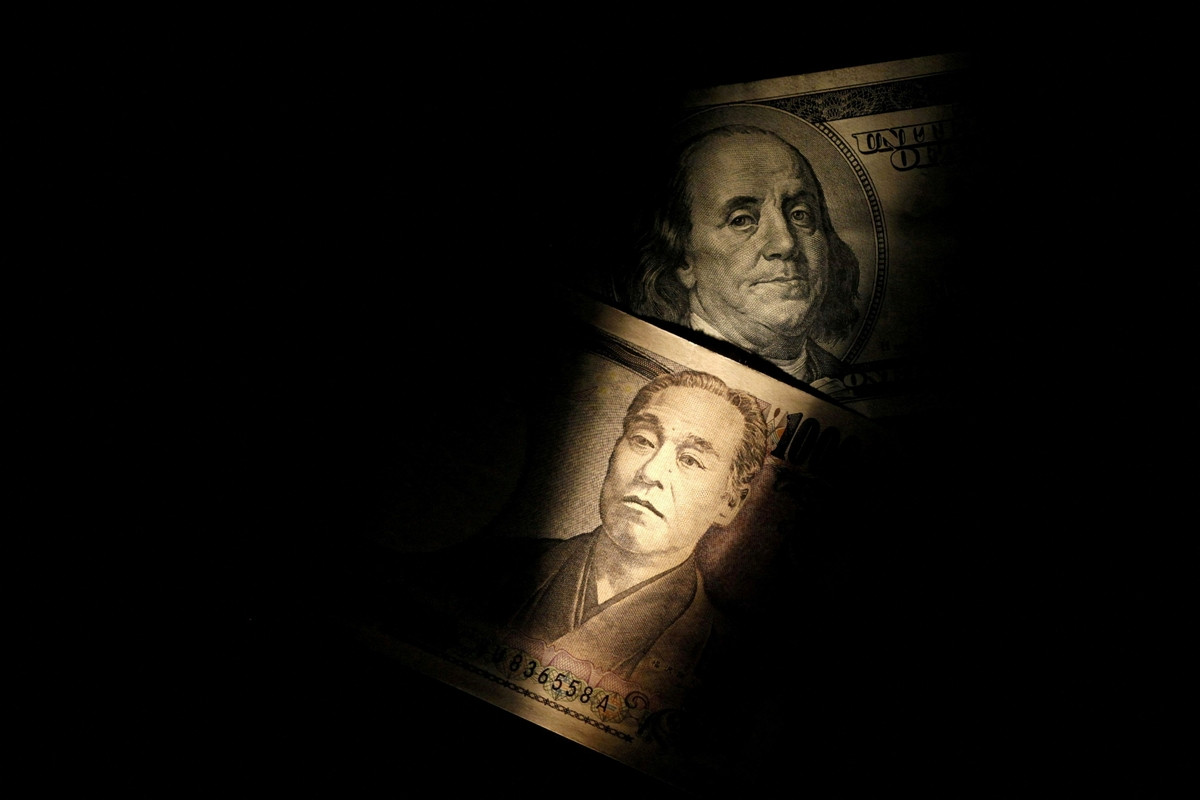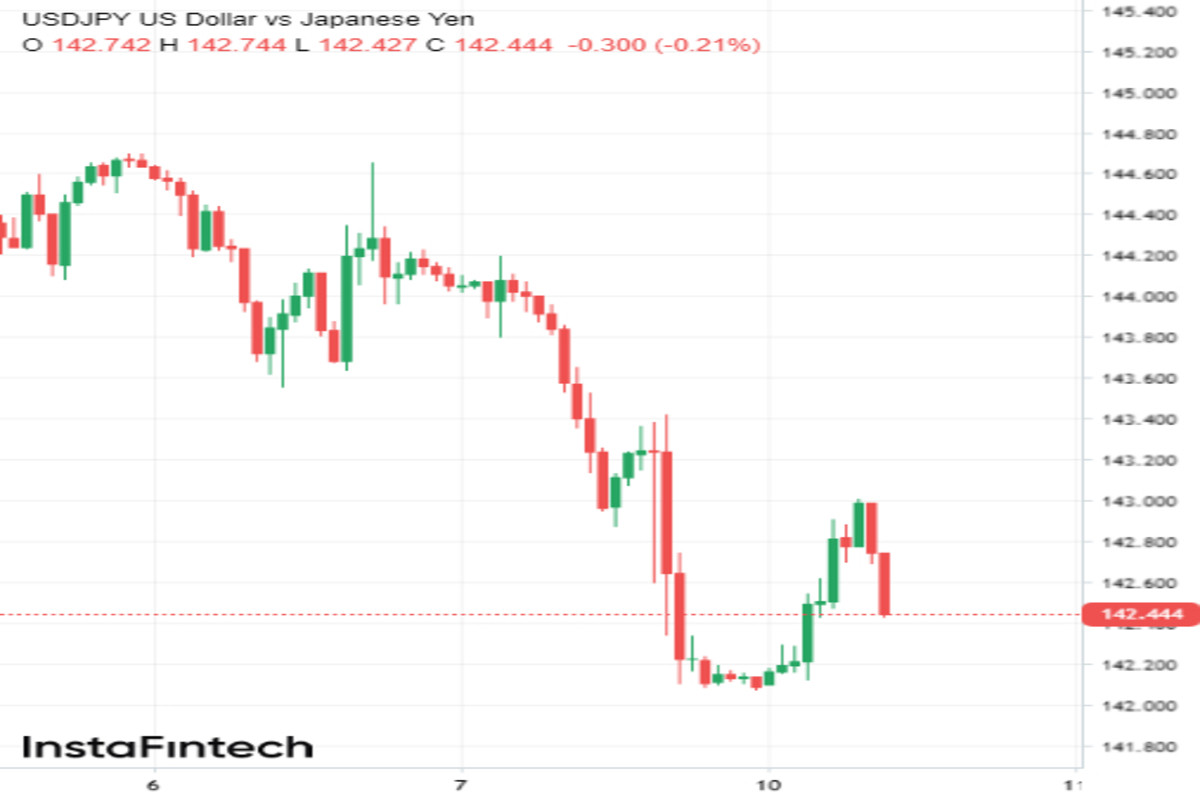
USD/JPY has found itself licking its wounds at the start of the new week. Last Friday, the pair slumped by 1.4%, displaying the worst performance among all major US dollar pairs. Let us delve into the reasons behind this sharp decline and why many experts have lost faith in its recovery.
What undermined USD?
Towards the end of the previous week, the greenback sharply declined across the board. At the end of Friday's trading, the US dollar index fell by nearly 0.8%, but the US dollar suffered particularly large losses against the Japanese yen. The USD/JPY pair closed at 142.12, sliding down by 1.4% and hitting a two-week low.

The primary cause of the American currency's dive was the underwhelming US nonfarm payroll data for the preceding month, which was released on July 7. The data release turned out to be worse than expected, lowering market expectations for further interest rate hikes in America.
According to the report, the US economy added the fewest number of jobs in 2.5 years in June, a mere 209,000. This figure was below economists' initial estimates of 225,000 and significantly lower than May's reading of 306,000.
Despite the significant slowdown in the US labor market, traders still expect the Fed to increase the key interest rate by 0.25% in July. Market participants are pricing in an 88% probability of such a scenario.
However, the latest nonfarm payrolls release has significantly affected investors' expectations regarding another rate hike this year. Currently, such a scenario appears highly unrealistic to the market, with the chances of it happening estimated at only 40%.
The prospect of the July rate hike potentially marking the end of the Fed's current tightening cycle exerted immense pressure on US Treasury yields across the yield curve. Last Friday, the yield on 5-year bonds dropped to 4.29%, while their 10-year counterparts declined to 4.02%.
The sharp drop in US bond yields became the main bearish factor for USD/JPY. In addition, the yen received additional support from the Japanese wage statistics at the end of the week
The Japanese Ministry of Labor's report showed that nominal wages in the country recorded the highest growth rate since 1995 in May. This significantly intensified speculation among most market participants that the Bank of Japan (BOJ) may normalize its monetary policy earlier than expected.
"The stronger wage negotiations are starting to feed through, which is what the BOJ wants. They've said very clearly that if they see evidence of more sustained, stronger wage growth that could give them more confidence that they can beat their inflation target and then look obviously to moving away from loose policy settings," MUFG strategist Lee Hardman said.
Bearish outlook for USD/JPY
The latest nonfarm payrolls report indicated the US labor market has weakened compared to previous months. However, overall job growth in the US remains high.
Taking this into account, along with the current level of inflation which is twice the Fed's target, many analysts lean towards the likelihood of a rate hike this month.
However, expectations of a July move could have supported the US dollar if not for one crucial caveat. Speculation about forthcoming monetary policy easing in the US over the next few months is actively circulating in the market.
There is a high risk that such speculation may intensify even further this week, placing substantial pressure on dollar bulls and inciting a second significant USD sell-off
Bloomberg reported that hedge funds had shifted to a bearish stance on the US dollar for the first time since March, based on their belief that the Federal Reserve was nearing the conclusion of its interest-rate hiking cycle.
It is expected that in the coming days, dollar bears will maintain their advantage, and they will be supported by the upcoming US inflation data release, which will be published on Wednesday, July 12.
According to economists' forecasts, consumer prices in the US slowed to 3.1% from 4.0% in June. If the CPI data meets estimates or even falls short of the outlook, it will likely reduce the probability of a rate hike after the July FOMC meeting.
However, the key gauge for traders will be the core CPI, which excludes food and energy prices. Should it drop from the previous reading of 5.3% to 5.0% or lower, it will cast doubt even on a July rate hike, Kit Juckes, analyst at Societe Generale, said.
According to Juckes, in such a scenario, USD/JPY would risk a nosedive similar to the one observed last week.
Juckes predicts that weak inflation data in the US could send USD/JPY down by 1.4% to 140.
Current technical situation
Last week dealt a severe blow to USD/JPY bulls, resulting in bears gaining the upper hand. The Relative Strength Index (RSI) dropped to the 50.00 mark, while the Moving Average Convergence Divergence (MACD)'s red line crossed above zero.
To alleviate the negative pressure, USD/JPY needs to break above 144.00. The closest resistance level is currently at the 20-day SMA at 142.75, followed by 143.00 and 143.60.
On the other hand, key support levels are currently at 142.00, 141.40, and 140.35.





















